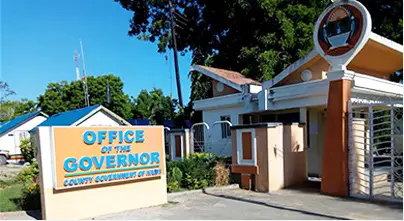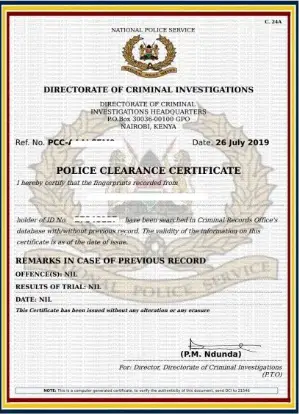Have you ever wondered how our roads stay safe, or how your car gets registered and licensed? The National Transport and Safety Authority (NTSA) plays a pivotal role in ensuring the safety and efficiency of our road transport system.
In this article, we’ll dive deep into the core functions of NTSA, explaining each step of the process in a friendly and informative way.
Introduction: Getting to Know NTSA
Before we jump into the nitty-gritty, let’s start with a quick overview of what NTSA is all about. The National Transport and Safety Authority, commonly known as NTSA, is the guardian angel of road safety and transport management in many countries.
It’s like the unsung hero of our daily commute, working tirelessly behind the scenes to make sure we can get from point A to point B as safely as possible.
But what exactly does NTSA do? Well, that’s what we’re here to explore. So, buckle up, and let’s hit the road to discover the core functions of NTSA.
Registration and Licensing of Motor Vehicles
Table 1: Vehicle Registration Process
| Step | Description |
|---|---|
| 1 | Submission of required documents and fees |
| 2 | Vehicle inspection and verification |
| 3 | Issuance of registration number and plates |
| 4 | Certification of ownership |
First up, we have the essential task of registering and licensing motor vehicles. If you’ve ever bought a car or a motorcycle, you know how important it is to have all the necessary paperwork in order. NTSA ensures that your vehicle is properly registered and licensed, which is crucial for various reasons.
When I bought my first car, I remember being overwhelmed by the paperwork involved. Thankfully, NTSA’s website had a detailed guide that walked me through the process step by step.
It all starts with submitting the required documents and fees (Table 1, Step 1). This includes proof of ownership, insurance, and compliance with emission standards, among other things.
One of the key moments in this process is the vehicle inspection and verification (Table 1, Step 2). It’s like giving your car a thorough check-up to make sure it’s fit for the road.
Once your vehicle passes the inspection, you’re issued a registration number and plates (Table 1, Step 3), making your car officially roadworthy. This ensures that only vehicles meeting safety and environmental standards are allowed on our roads.
Motor Vehicle Inspections and Certification
Table 2: Vehicle Inspection Types
| Type | Purpose |
|---|---|
| Periodic | Regular safety check |
| Initial | First inspection for new vehicles |
| Change of owner | Ensuring proper transfer of ownership |
Now that your car is registered, it’s time to talk about motor vehicle inspections and certification (Table 2). This is where NTSA really steps up to the plate to ensure that your vehicle is in tip-top shape.
Imagine this: you’re planning a road trip with your friends, and the last thing you want is your car breaking down in the middle of nowhere. That’s where periodic vehicle inspections come in. These regular safety checks (Table 2, Periodic) ensure that your car is running smoothly and doesn’t pose any risks to you or others on the road.
When I took my car for its first inspection (Table 2, Initial), I was a bit nervous. However, it turned out to be a breeze. The inspector checked everything from brakes to lights, making sure my car was ready for the road.
But what about when you sell your car? That’s where the change of owner inspection (Table 2, Change of owner) comes in. NTSA makes sure that ownership is properly transferred, preventing any potential legal or safety issues down the line.
Regulation of Public Service Vehicles (PSVs)
Table 3: Key PSV Regulations
| Regulation | Purpose |
|---|---|
| Setting fare prices | Preventing overcharging and ensuring affordability |
| Driver training and licensing requirements | Ensuring qualified and safe drivers on PSVs |
| Vehicle roadworthiness checks | Maintaining safe and well-maintained PSVs |
Now, let’s shift gears and talk about the critical role NTSA plays in regulating Public Service Vehicles (PSVs) (Table 3). Whether you’re a daily commuter or have ever used public transport, you’ll appreciate the efforts made by NTSA to ensure your safety and convenience.
One of the most visible aspects of PSV regulation is setting fare prices (Table 3). Nobody likes to be overcharged, right? NTSA steps in to prevent fare gouging and ensure that public transport remains affordable for everyone.
When I moved to the city for college, I relied on PSVs to get around. Knowing that there were regulations in place to prevent price hikes during peak hours was reassuring.
Another crucial aspect of PSV regulation is driver training and licensing requirements (Table 3). We all want to feel safe when we hop onto a bus or a matatu, and NTSA ensures that only qualified and safe drivers operate these vehicles.
I once had the chance to chat with a PSV driver who shared his experience of going through the rigorous NTSA driver training and licensing process. It’s not easy, but it’s designed to ensure that drivers are well-prepared for the challenges of the road.
Government Policy Advisory
Table 4: Key Policy Recommendations
| Policy Area | Example Recommendations |
|---|---|
| Road safety improvements | Installation of traffic cameras and speed limit signage |
| Environmental sustainability | Promotion of electric and hybrid vehicles |
| Traffic congestion reduction | Implementation of carpool lanes and public transit upgrades |
Now, let’s take a look at another critical function of NTSA—advising the government on national policy (Table 4). This might sound like a bureaucratic task, but it has a profound impact on our road transport system.
Consider the example of road safety improvements (Table 4). NTSA’s recommendations, such as the installation of traffic cameras and speed limit signage, have contributed to safer roads.
I remember the days when speed limits weren’t as strictly enforced, and it felt like the wild west out there. Thanks to NTSA’s policy advice, our roads are now safer for all of us.
Another area where NTSA’s influence is felt is in environmental sustainability (Table 4). With growing concerns about climate change, NTSA’s advice on promoting electric and hybrid vehicles is helping reduce the environmental impact of our transportation system.
Road Safety Strategies
Table 5: Road Safety Initiatives
| Initiative | Impact |
|---|---|
| Anti-drunk driving campaigns | Reduction in alcohol-related accidents |
| Pedestrian safety programs | Decrease in pedestrian accidents |
| Vehicle safety standards enforcement | Safer vehicles on the road |
When it comes to promoting road safety, NTSA doesn’t hold back. They’ve developed a range of road safety strategies (Table 5) that have made a real difference in our daily lives.
One of their most impactful initiatives is anti-drunk driving campaigns (Table 5). I remember attending one of these campaigns, where they highlighted the dangers of drinking and driving.
It hit home when they shared stories of real people affected by drunk driving accidents. Thanks to these campaigns, there has been a noticeable reduction in alcohol-related accidents.
But it’s not just about drivers. NTSA also runs pedestrian safety programs (Table 5) to reduce pedestrian accidents. Whether you’re walking to work or taking a stroll in your neighborhood, these programs help create safer environments for all of us.
Public Education on Road Safety
Table 6: Road Safety Educational Programs
| Program | Target Audience | Impact |
|---|---|---|
| School road safety clubs | Students and teachers | Road safety awareness among youth |
| Online road safety resources | General public | Easy access to safety information |
Education is key to preventing accidents, and NTSA understands that. That’s why they’re actively involved in facilitating public education on road safety (Table 6). This is where personal anecdotes can truly shine.
I remember my school days when we had road safety clubs (Table 6). These clubs, supported by NTSA, taught us valuable lessons about crossing the road safely and being responsible pedestrians. It’s amazing how these early lessons stick with you throughout life.
Today, NTSA continues to reach out to the public through online road safety resources (Table 6). Whether it’s tips on defensive driving or information on road signs, these resources are just a click away, making it easier for all of us to stay informed.
Research and Audits on Road Safety
Table 7: Recent Research Findings
| Research Area | Key Findings |
|---|---|
| Distracted driving | Prevalence of smartphone use while driving |
| Seatbelt usage | Low seatbelt usage rates, especially among rear passengers |
| Road design and safety | Identifying high-risk road sections |
To make informed decisions, you need data, and that’s precisely what NTSA provides through their research and audits on road safety (Table 7). These findings help shape policies and safety measures.
One interesting study I came across focused on distracted driving (Table 7). It revealed the alarming prevalence of smartphone use while driving. It’s a habit many of us are guilty of, but NTSA’s research reminds us of the risks involved.
Another study highlighted the issue of seatbelt usage (Table 7). It pointed out the low rates of seatbelt use, especially among rear passengers. These findings prompted awareness campaigns and stricter enforcement, making our roads safer.
Compilation of Inspection Reports on Traffic Accidents
Table 8: Insights from Inspection Reports
| Report Type | Key Insights |
|---|---|
| Road condition assessments | Identifying areas needing repair |
| Accident causation analysis | Understanding the causes of accidents |
| Vehicle safety evaluations | Identifying safety improvement areas |
NTSA doesn’t stop at just preventing accidents; they also compile inspection reports on traffic accidents (Table 8). These reports provide critical insights into accident causes and road conditions.
One type of report focuses on road condition assessments (Table 8). It helps identify areas that need repair or improvement. After all, potholes and poorly maintained roads can contribute to accidents.
Another valuable report is accident causation analysis (Table 8). It helps us understand the root causes of accidents. This information is crucial for developing targeted safety measures.
Training, Testing, and Licensing of Drivers
Table 9: Driver Training and Licensing Process
| Step | Description |
|---|---|
| Enroll in driving school | Complete a recognized driving course |
| Pass theory test | Demonstrate knowledge of traffic rules and signs |
| Pass practical test | Prove driving skills and safety knowledge |
| Obtain a driver’s license | Issued upon successful completion of tests |
Getting behind the wheel is a big responsibility, and that’s why NTSA takes the training, testing, and licensing of drivers (Table 9) seriously. Whether you’re a new driver or someone renewing your license, this process ensures that you’re fit for the road.
I remember my first experience at the driving school (Table 9, Step 1). It was both exciting and nerve-wracking. The driving instructors were patient and thorough, ensuring that I learned the ropes of safe driving.
To obtain a driver’s license, you need to pass both a theory test (Table 9, Step 2) and a practical test (Table 9, Step 3). These tests assess your knowledge of traffic rules and signs as well as your driving skills and safety knowledge. It’s a rigorous process, but it ensures that only competent drivers are allowed on the road.
Formulation and Review of Driving School Curriculum
Table 10: Driving School Curriculum Elements
| Curriculum Element | Purpose |
|---|---|
| Defensive driving | Promoting safe and responsible driving habits |
| Road safety education | Raising awareness about road safety |
| Vehicle maintenance | Teaching basic car maintenance skills |
If you’ve ever wondered how driving schools teach safe driving practices, NTSA plays a vital role in formulating and reviewing the driving school curriculum (Table 10). This ensures that aspiring drivers receive comprehensive education.
One essential element of the curriculum is defensive driving (Table 10). It promotes safe and responsible driving habits, equipping new drivers with the skills to handle various road situations.
Road safety education (Table 10) is another crucial component. It raises awareness about road safety and encourages responsible behavior behind the wheel. After all, knowledge is power when it comes to preventing accidents.
Coordination of Road Safety Activities
Table 11: Stakeholders in Road Safety
| Stakeholder | Role |
|---|---|
| Law enforcement agencies | Enforce traffic rules and regulations |
| NGOs and community groups | Promote road safety awareness |
| Vehicle manufacturers | Ensure vehicle safety standards |
Finally, we come to the last piece of the puzzle—the coordination of road safety activities (Table 11). NTSA doesn’t work alone; they collaborate with various stakeholders to create a safer road environment.
Law enforcement agencies (Table 11) play a critical role in enforcing traffic rules and regulations. Their presence on the road reminds us to obey the law, and NTSA supports their efforts by providing training and resources.
Non-governmental organizations (NGOs) and community groups (Table 11) also contribute to road safety. They promote awareness and educate the public about safe practices. I’ve seen local NGOs organizing road safety workshops in my community, and it’s heartening to know that they have support from NTSA.
Vehicle manufacturers (Table 11) are another key player. NTSA ensures that vehicles on our roads meet safety standards, but it’s the manufacturers’ responsibility to build safe vehicles in the first place.
Final Thoughts
As we wrap up our exploration of NTSA’s core functions, it’s clear that they play a crucial role in ensuring our roadways are safe and efficient. From vehicle registration to policy advisory, road safety strategies to driver training, NTSA is on the front lines of creating a safer transport system for all of us.
The next time you hit the road, take a moment to appreciate the work that NTSA does behind the scenes. Their commitment to road safety helps us all get to our destinations safely, and that’s something we can all be grateful for. So, here’s to NTSA—our unsung heroes of the road!



